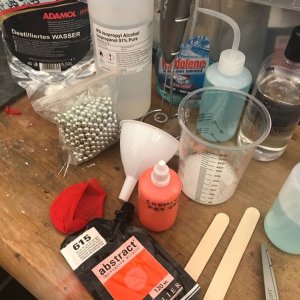A
Arent Jack
Guest
Today I started making my own High Flow Acrylics using cheap acrylic paint, windolene (windex), distilled water, 92% isopropyl alcohol and glycerin. I used a bit of pantyhose as a filter. Tried it out in a cheap 0.2mm airbrush, worked great, good flow, good coverage and fast drying. I was surprised how good it worked. Tomorrow gonna experiment a bit more and try it in my H&S infinity 0.15 mm!!






